Sergei Voronin
Year of birth: 1991.
Your education: Moscow School of Contemporary Art (MSCA).
Describe your art in three words: expressive, abstract, bright.
Your discipline: Abstraction.
Website | Instagram
How did your interest in graphic design during school influence your journey into oil painting and abstraction?
My interest in graphic design during school played a significant role in shaping my creativity and preferences in art. Working with digital tools such as Paint, Photoshop, and Flash animation developed my sense of composition, colors, and forms, which are essential foundations for any visual art, including oil painting and abstraction.
The use of graphic software helped me develop an understanding of color schemes, contrasts, and harmony, which are very useful when working with oil paints.
My experience in creating digital images and animations contributed to my understanding of composition and highlighting key elements, which is important in abstract painting.
Creating animations and studying graphic design nurtured my ability to see art in various forms and styles, which is an integral part of abstraction.
I believe that my experience in school may have been the foundation on which I built my understanding and love for more traditional forms of art, such as oil painting, combining them with modern approaches and ideas that I gained through digital graphics.
Your statement mentions nature, architecture, and music as sources of inspiration. Could you share more about how these elements manifest in your paintings?
Nature, architecture, and music can have a profound influence on creativity, and these elements can manifest in paintings in different ways.
Inspiration from nature can be reflected through the color palette, textures, and motifs. For example, abstract forms reminiscent of leaves, waves, or clouds can be reflected in the dynamics and composition of a painting. Natural colors—soft and muted earthy tones or bright shades of a sunset—can also influence color choices.
The influence of architecture can manifest through structural elements in paintings. Geometric shapes, lines, and symmetry can create a sense of order and balance, while more chaotic and abstract interpretations can evoke modern architectural trends. Architectural elements can also inspire interesting compositional solutions and play with space.
Music can affect my emotional state and mood, which can easily be reflected in painting through the dynamics and rhythm of brushstrokes, the choice of color palette, and the overall energy of the canvas. Certain musical genres or compositions may inspire the creation of paintings that convey similar emotions and moods—whether smooth and calming lines for classical music or sharp and expressive forms for jazz.
These sources of inspiration help create unique works that convey not only visual but also emotional and even conceptual elements, forming a unique artistic language.
Your work seems to be a constant exploration of new techniques and forms. How do you balance the desire to experiment with maintaining your unique artistic voice?
Finding a balance between experimentation and maintaining a unique artistic voice is indeed an exciting and challenging process. I strive to maintain this balance:
Before starting to work on a new piece, I try to understand what idea or emotion I want to convey. This helps me stay focused on what is truly important in the work, even if the form or technique changes.
Despite experimenting, I have a certain style or theme that remains constant in my works. This could be a characteristic color palette, a specific theme, or a motif that becomes a kind of calling card that connects all the works together.
While experimenting with new techniques, I make sure to study their history. This allows me to understand how they can be integrated into my own style without losing my unique voice.
Reflecting on past experiments helps me understand what worked and what didn’t. Sometimes, to understand the direction, it’s helpful to look back and evaluate progress in the paintings.
Feedback through social media gives me clues about how viewers perceive changes in my works. This helps adjust the course and not lose touch with what resonates with the audience.
Sometimes the results of experiments don’t immediately fit into the existing artistic language. I allow myself time to adapt and integrate the new, which helps preserve the integrity of my style.
Thus, while experimenting with new forms and techniques, I stay true to my core principles and ideas, creating art that evolves but remains authentic.
Can you describe a specific moment or experience in your life that significantly impacted your creative process?
My creative process began when everything settled in my life: I moved into a new apartment, had my fourth child, started doing sports, and got a job as a manager at a large company. Inspiration was born from the new environment and meeting interesting people. I realized it was time to look deeper within myself and express the emotions I experienced through art.
How do travel and life events influence the themes and emotions in your artwork?
Travel and life events greatly enrich my creative process. I try to take vacations abroad three times a year, offering a new perspective on the world and expanding the range of themes and emotions I bring to my work.
Traveling opens up access to new architectural forms and cultural symbols, which stimulate me as an artist to experiment with new styles and techniques.
I am often inspired by the works of other artists whom I follow on YouTube and Instagram.
What role do colors play in your compositions, and how do you decide on the palette for a particular piece?
Colors play a key role in compositions as they can significantly influence the perception and emotional response of the viewer. The choice of a color palette for a particular work often depends on the emotions and atmosphere I want to convey, as well as the conceptual goals of the piece.
Different colors evoke different emotional reactions. For example, warm tones such as red, yellow, and orange can evoke feelings of warmth, energy, and passion, while cool tones such as blue and green may be associated with calmness or sadness.
Themes and subjects can dictate the palette. Landscapes may require natural, muted tones, while abstract works may be done in bold, saturated colors.
In different cultures, colors may have different symbolic meanings, and this knowledge can be used to convey a more layered meaning.
I choose the palette based on my personal style and intuition, often experimenting and intuitively determining which colors best suit the idea.
For example, in the work “Freedom of Speech Beyond Wealth,” the background was chosen in the colors of the flag, and wealth was shown through the color gold.
What advice would you give to young artists who are trying to develop their own style and voice in the art world?
Developing your own style and voice in art is an exciting but also challenging journey that requires time and dedication.
1. Don’t be afraid to experiment with different techniques, styles, and materials. By trying new things, you can better understand what you truly enjoy and what best suits your artistic intuition. If you are a painter, don’t hesitate to use other tools like textured paste or gold leaf.
2. Studying the works of renowned artists can provide not only technical knowledge but also inspiration. Understanding how they solve compositional and color challenges can help you develop your own approach. I often visit museums and contemporary art exhibitions. If you don’t have time to visit such exhibitions, you can always subscribe to Telegram channels and see photos of other artists attending exhibitions and posting pictures from there.
3. Try to express your own thoughts, feelings, and experiences in your art. Sincerity and authenticity often lead to the creation of a unique and recognizable style.
4. Never stop learning and growing, whether through formal education, workshops, or just self-study. Developing skills and understanding new concepts will expand your artistic arsenal.
5. Be open to constructive criticism and use it as a tool for growth. It’s important not to take everything personally but to extract what’s useful from others’ opinions to improve your art. It’s crucial to note who’s giving advice: a professional or a layperson. Not all advice is helpful.
6. Work on what truly inspires you, rather than what you think may be popular. Passion will help you overcome difficulties and keep your motivation. It’s important to remember that trends grow fast but also fade quickly and become unpopular.
7. Constant practice and creating art regularly help refine skills and foster new ideas.
8. Inspiration can be found everywhere if you stay observant and curious. Observing the world around you can lead to unique ideas and concepts.
9. Developing your own style takes time. Don’t rush and don’t compare yourself to others. Every artist has their own path, and it’s important to move at your own pace.
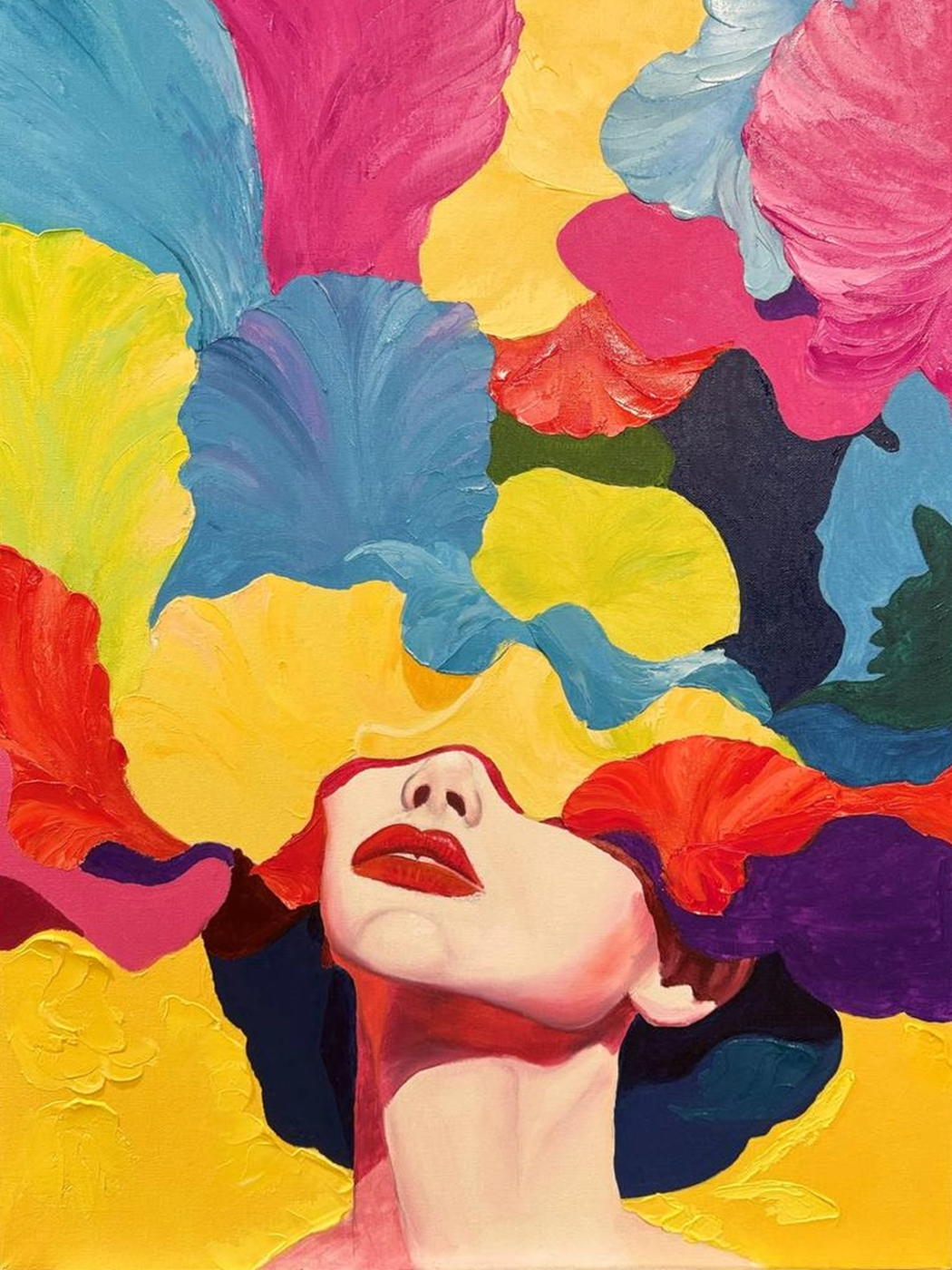 Sergei Voronin | Imagination
Sergei Voronin | Imagination
Additionally, I’d like to highlight the painting “Imagination,” which is full of bright and saturated colors. Yesterday, I received feedback from a viewer who was deeply emotionally affected by it. She shared that in recent months her life was filled with difficult events, such as illness, surgery, and the upcoming euthanasia of her beloved pet. Despite this, upon encountering the artwork, she found comfort and support. The painting became a way for her to escape the hardships of reality and immerse herself in a world of beauty and tranquility.
The painting not only serves as a source of inspiration for her as an artist but also helps her cope with difficult moments in life, becoming a kind of art therapy.
I was personally very emotionally touched that the painting became a tool for someone’s art therapy.
The painting allowed her to forget the negativity, worries, and pain in her life and immerse herself in a bright and positive world.
Perceiving art as something beautiful and inspiring helps her see life in more colorful tones, which contributes to her emotional healing.
In the end, art is not only her professional field but also an important tool for maintaining emotional balance and healing.

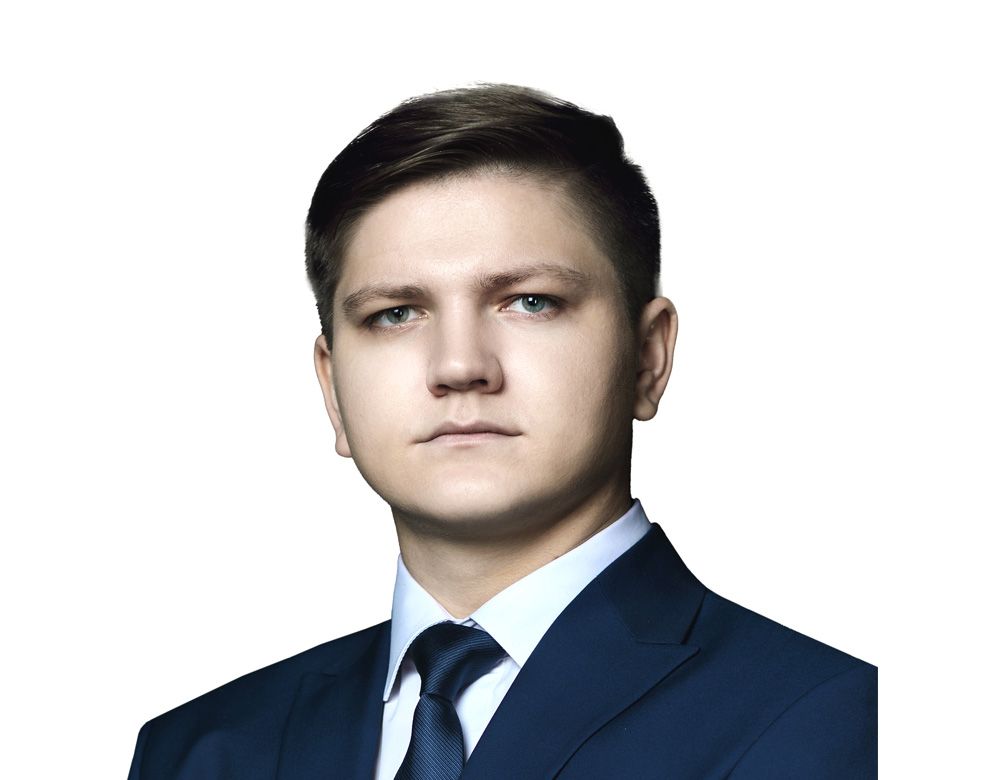
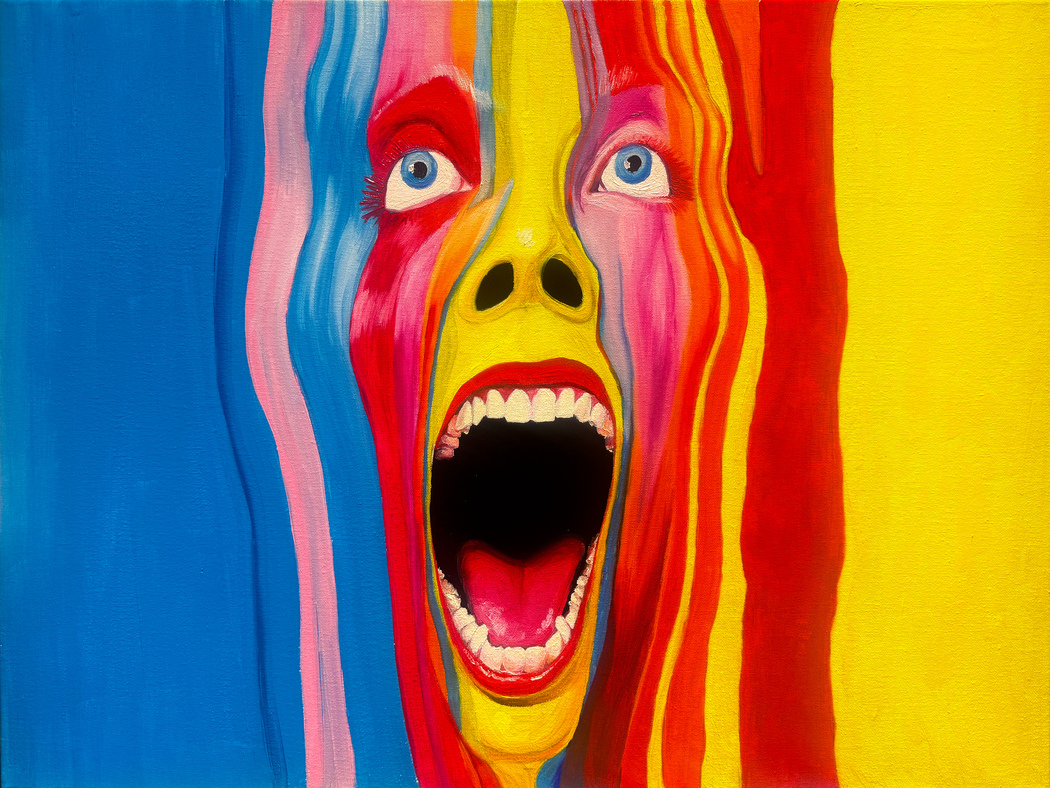
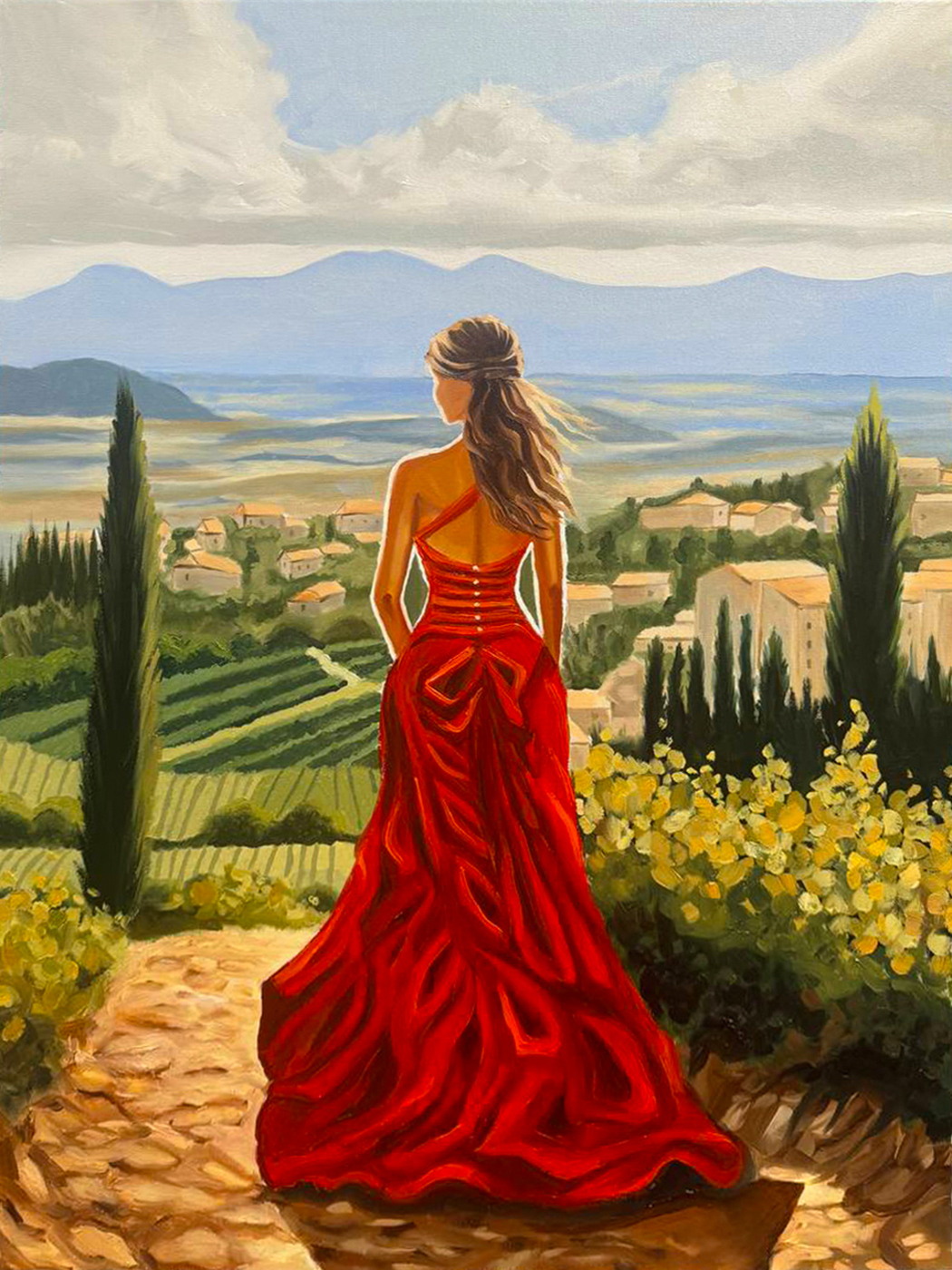

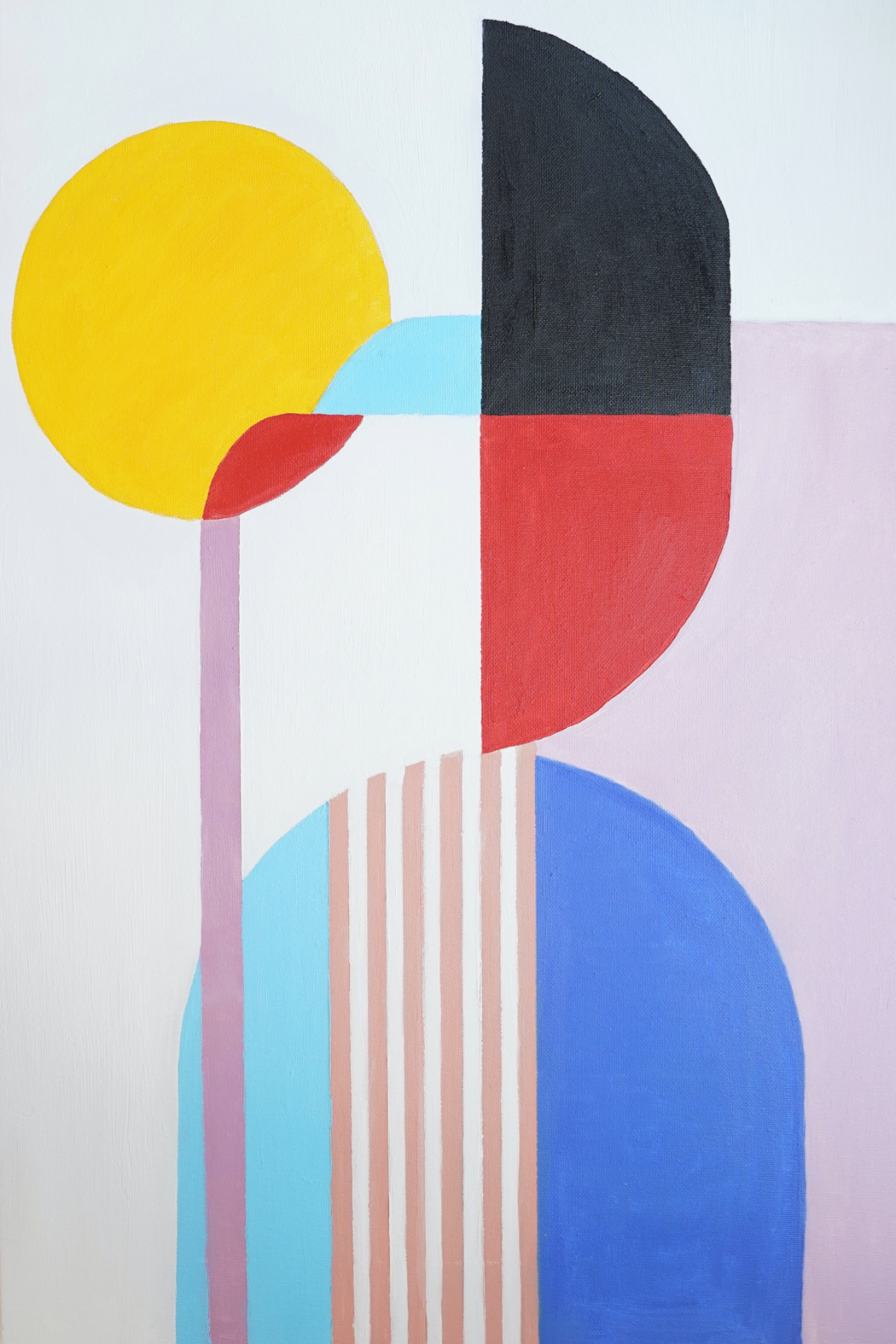
Zola S.
Such creativity. I wish that I had thought of it, especially the woman in the red dress.